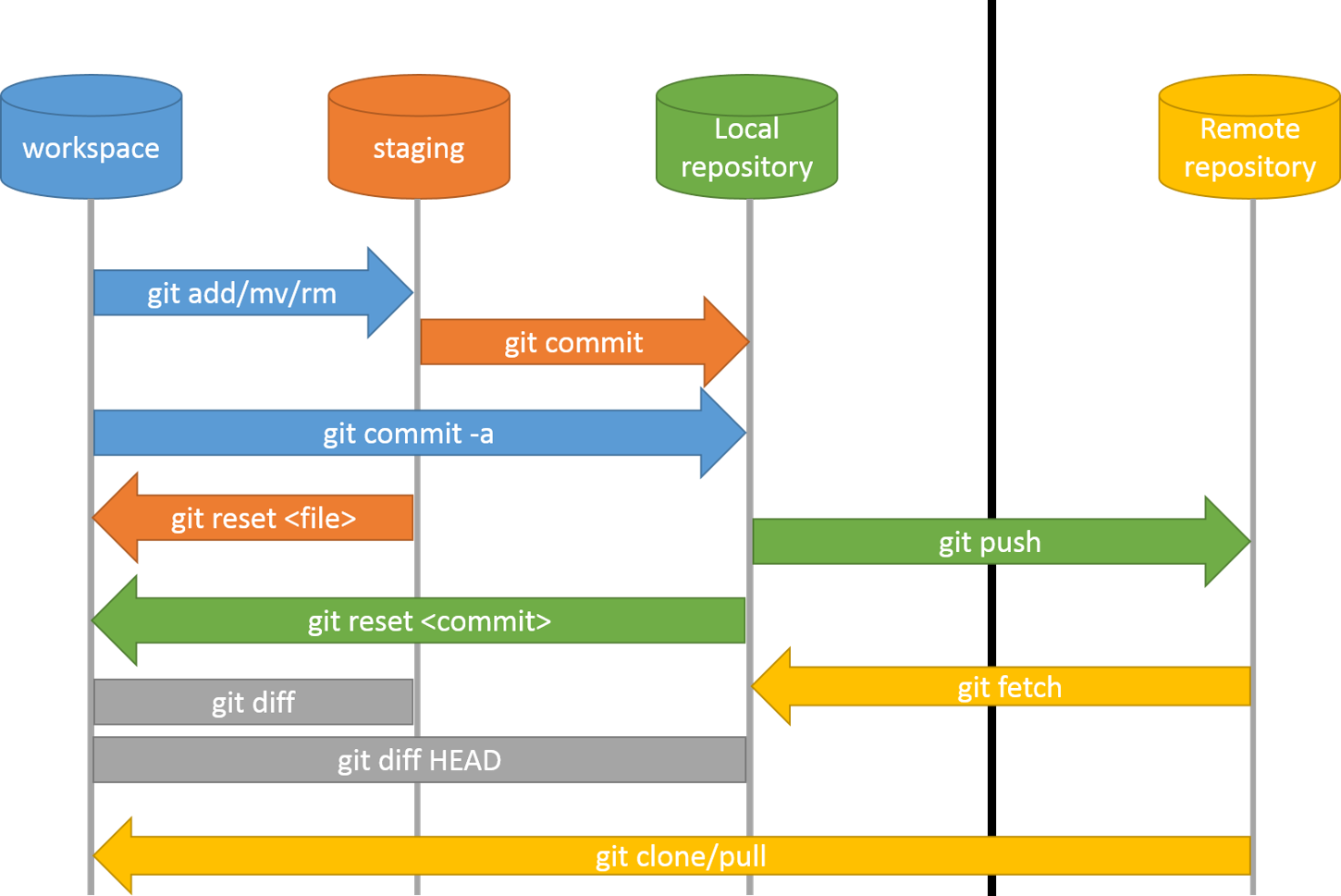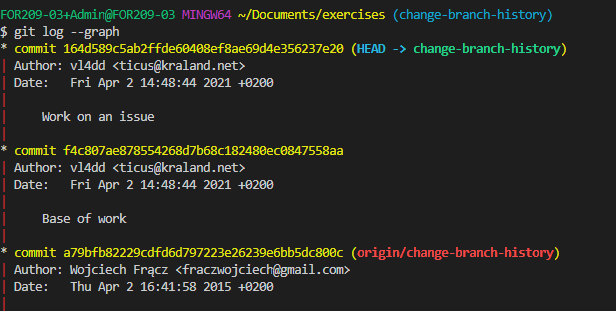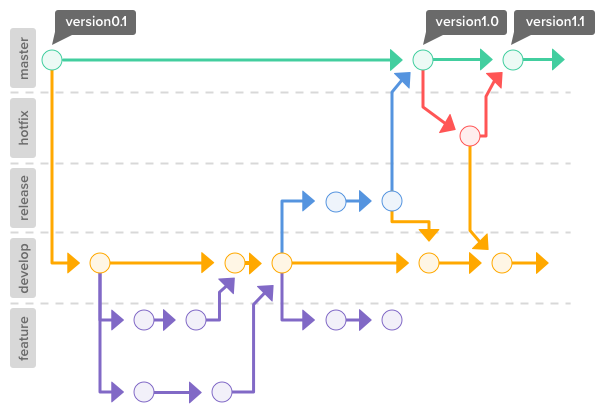5.5 KiB
Git
Description
Git is a free and open source distributed version control system designed to handle everything from small to very large projects with speed and efficiency.
Usefull links
Git System
 >
>
Basic commands
Git clone
Clone repo located at <repo> onto local machine. Original repo can be located on the local filesystem or on a remote machine via HTTPS or SSH.
git clone
Git init
Initialize an existing directory as a Git repository
git init
Create empty Git repo in specified directory. Run with no arguments to initialize the current directory as a git repository.
$ git init <directory> =
Git status
List which files are staged, unstaged, and untracked.
$ git status
Git config --global name & email
Must be identifiable for credit when review version history.
$ git config --global user.name “[firstname lastname]”
$ git config --global user.email “[valid-email]”
Git add
Stage all changes in <directory> for the next commit. Replace <directory> with a <file> to change a specific file.
$ git add readme.md image.jpg
Git commit
Commit your staged content as a new commit snapshot
$ git commit -m "First Commit"
After doing this, you may fix the identity used for this commit with:
$ git commit --amend --reset-author
Git log
Show all commits in the current branch’s history
$ git log
Graphs
The --graph option draws an ASCII graph representing the branch structure of the commit history. This is commonly used in conjunction with the --oneline and --decorate commands to make it easier to see which commit belongs to which branch:
$ git log --graph --oneline --decorate
Tig
Tig allows you to browse changes in a Git repository and can additionally act as a pager for output of various Git commands. When used as a pager, it will display input from stdin and colorize it.
$ tig
When browsing repositories, Tig uses the underlying Git commands to present the user with various views, such as summarized commit log and showing the commit with the log message, diffstat, and the diff.
Git diff
Show unstaged changes between your index and working directory.
$ git diff
SHARE & UPDATE
Retrieving updates from another repository and updating local repos
=================================
add a git URL as an alias
git remote add [alias] [url]
fetch down all the branches from that Git remote
git fetch [alias]
merge a remote branch into your current branch to bring it up to date
git merge [alias]/[branch]
Transmit local branch commits to the remote repository branch
git push [alias] [branch]
git pull
fetch and merge any commits from the tracking remote branch
BRANCH & MERGE
Isolating work in branches, changing context, and integrating changes
git branch
list your branches. a * will appear next to the currently active branch
git branch [branch-name]
create a new branch at the current commit
git checkout
switch to another branch and check it out into your working directory
git checkout -b|-B <new_branch> []
Specifying -b causes a new branch to be created as if git-branch(1) were called and then checked out.
If -B is given, <new_branch> is created if it doesn’t exist; otherwise, it is reset. This is the transactional equivalent of
git merge [branch]
merge the specified branch’s history into the current one
git log
show all commits in the current branch’s history
TRACKING PATH CHANGES
Versioning file removes and path changes
=================================
Delete the file from project and stage the removal for commit
git rm [file]
Change an existing file path and stage the move
git mv [existing-path] [new-path]
Show all commit logs with indication of any paths that moved
git log --stat -M
Checker le satus
git status
Ajouter un element dans la branche
git add Readme.md
Commit les changement
git commit -m "First commit"
Show all commit
git checkout
Merge
git merge
Setup
Configuring user information used across all local repositories
git config --global user.name “[firstname lastname]”
set a name that is identifiable for credit when review version history
git config --global user.email “[valid-email]”
set an email address that will be associated with each history marker
git config --global color.ui auto
set automatic command line coloring for Git for easy reviewing
Saving your uncommitted work for a quick fix then getting it back
git stash
temporarily stash your work since your last commit
git stash pop
fetch your stashed work to continue it
$ git stash pop stash@{2}
in case you want to apply a specific Stash item (not the most recent one), you can provide the index name of that item in the "pop" option
Rewriting history
git commit --amend -m "New commit message"
replace the last commit
git commit --amend --no-edit
replace the last commit without changing the commit message
git rebase -i {branch}
take the precedent commit and add it to your branch
Ignoring files
touch .gitignore && echo {what you want to ignore} >> .gitignore
create a file and specify what (extensions, directories, files) to ignore in it
git rm --cached {fileignored}
remove from the tracking index a file that should be ignored but wasnt because already tracked when the ignore rule was created


